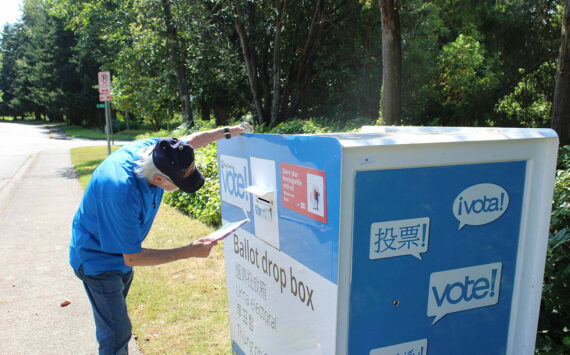A new survey by the Pew Internet & American Life Project finds that some 42 percent of online Americans use instant messaging. “IM” is especially popular among younger adults the Generation Y demographic – and technology enthusiasts.
IM is more than a tool for chatting. It is also a popular tool for self-expression. Its starting to be adopted in the workplace as well.
Amanda Lenhart , Research Specialist from Pew Internet & American Life Project, took a few minutes from her research to share highlights of the study.
Q: Why don’t you run through some of the highlights of the study for us.
Lenhart: About 42 percent of online Americans are using instant messaging. What we also found pretty fascinating is about 29 percent of the group is using it everyday. Its something that people incorporating into their daily lives. Another thing I found quite fascinating is a quarter of instant messaging users say they IM more than e-mail.
Q: Is that number growing?
Lenhart: We don’t have data over time on that. We have seen that more instant messenger users that prefer IM to e-mail are by far in what we call Generation Y group, which, you probably expect, is the 18 to 27-year-olds. They are by far the most enthusiastic users of IM in a whole variety of ways. In fact, 42 percent of all instant messenger’s in that group say they use IM more than e-mail.
Q: Did they tell you why they prefer IM over e-mail?
Lenhart: Well, we didn’t ask it specifically in the survey, but we have done some recent research with some young people been told us the same thing — because it felt more like a conversation instead of a letter the way e-mail feels to them. Also, we suspect there are some spam issues going on, that people are moving over to instant messaging because they don’t have to deal with as much spam there.
Q: This may be giving us a glance into how important instant messaging is going to be in the future as this generation grows up.
Lenhart: Absolutely. This particular generation, young adults 18 to 27, really started using instant messaging as teenagers. Its been around for about eight years and they are the ones that kind of cut their teeth on the technology and first started using it intensively. They are bringing it along with them into the workplace.
Q: Teenagers may be using it more for social interaction, but it’s interesting that IM has invaded the workplace. Do you have information on that?
Lenhart: Our study did ask about workplace use of instant messaging. It was actually a little bit smaller of a group than we had expected. It was 21 percent of IM users saying they IM at their job. Its about 11 million Americans, so it’s nothing to sneeze at. It’s a big group of people, but in the context of Internet use, it’s a relatively small group. We suspect a lot of that has to do with companies being a little bit nervous about incorporating instant messaging into their workplace. Is it going to be something were my employees are to be less productive? Are they going to gossip? Will it be a source of security and business leaks? But I think, with the advent of more proprietary technology for instant messaging, which allows more security and recordkeeping, more oversight in the technology, then employers will feel more comfortable with it and we will start to see more use of it in the workplace.
Q: Is there is a way to lock it down and make it more attractive to companies?
Lenhart: Yes, there is. There are generally clients, unlike the ones most people use at home, where you have to pay for these clients to run IM through a secure server thats held in the businesses own technological space rather than, for instance, AOL servers or Yahoo! servers, which is how other instant messages circulate through the Internet.
Q: Did you get a sense of how important it is to save those chat conversations for the company that would affect their adoption? A lot of companies have to archive e-mails for documentation reasons. Is that an issue you see what IM?
Lenhart: I think it is an issue. We were focused mainly on talking to users of IM. Users really felt that instant messaging was a positive thing for them in the workplace. It made them more productive and connected and more balanced workers. It did allow them to talk to other co-workers as well as family members and allowed them to multi-task through their workday. The question we asked was is IM a) a positive thing, or b) a mixed blessing but mostly positive, c) a mixed blessing but mostly negative, or d) totally negative. By far, 70 percent said it’s a mixed blessing but mostly positive.
Q: It also appears that people that use instant messaging our strong multi-tasker’s.
Lenhart: It was sort of surprising. I always thought that multi-tasking with the province of teenagers and young people, but I think we’re seeing it work its way into more adult use of this technology. I think a lot of it has to do with the fact that while instant messaging feels like a conversation, it really does have much more lag time built into it than actual conversation.
What’s happening was people were saying, hey – I really am waiting for my sister to answer the question I just asked her on instant messaging so I am going to scoot on over here and type an e-mail to my friend or going to do a piece of research or work on a document — so people are filling in the available time to make themselves more efficient.
Q: What type of instant messaging clients are out there and what is the most popular?
Lenhart: The most popular IM clients are put out by AOL — they have two clients: the proprietary one is used by their AOL.com users and their non-proprietary client, which can be used by anyone. Those two together captures close to 70 percent of the market.
The next group is Yahoo. They have about a third of the market. People are using multiple clients so they can talk to different groups of people who might happen to use different programs. MSN has about a quarter of users and then ICQ, which also happens to be an AOL-owned program, has about 6 percent of the users.
Q: Wasn’t ICQ the leader for the longest time?
Lenhart: They were actually the first program. It was started by an Israeli company in 1996 and was snapped up by AOL in the late 90s.
To read the full report, please visit: www.pewinternet.org/report_display.asp?r=133
To view a Powerpoint presentation online from Pew Internet & American Life Project, go to:
www.pewinternet.org/PPF/r/14/presentation_display.asp.
For more conversation with Amanda Lenhart about the Pew study, her full interview is online at WebTalkRadio.com and can be heard on KLAY 1180 AM Saturday, Sept. 25 at 11 am.
Dana Greenlee is co-host/producer of the WebTalkGuys Radio Show, a Tacoma-based nationally syndicated radio and webcast show featuring technology news and interviews.more people who really enjoyed everything about the show, including my performance, including the character.






